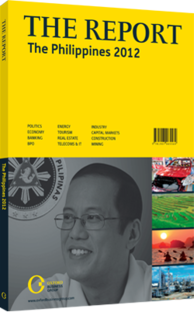OBG talks to Jacques Dupasquier, Chairman, The Net Group

Interview: Jacques Dupasquier
As Metro Manila becomes saturated, which areas present the most promising growth potential?
JACQUES DUPASQUIER: There are a few key cities that have the infrastructure to support growth, such as Cebu and Davao, as well as other up and coming locations.
Planning is key to managing efficient design development. For instance, Bonifacio Global City (BGC), which is a planned city designed like Minneapolis in terms of its traffic uptake system, is roughly the size of Boston, with 12m sq metres in total, of which 8m sq metres is private. The whole area is outlined for future mass transit systems and efficiency.
BGC was designed for the future. The fact that its design incorporated everything that could possibly be imagined for the next 30 years at the time of its establishment – i.e. schools, residential spaces, lifestyle amenities and, of course, copious office space – means that there is still plenty of room to grow.
There are also a number of locations throughout the Philippines catering to the tourism sector that have immense potential. Given that the country is the second-largest archipelago in a tropical zone, great weather and beautiful places are readily abundant.
What are the country’s current growth trends?
DUPASQUIER: We have seen the dominant development model move beyond the individual mixed-use structure and towards mixed-use community neighbourhoods that provide easy access to services and amenities by offering multiple-use facilities within close proximity. This results in a vibrant lifestyle imbibed with a common sense of ownership, belonging and pride.
Alongside this trend, the Philippines is answering the call to “go green” in South-east Asia. There is an upward trend in the number of new developments that are getting green certification. Our Building for Ecologically Responsive Design Excellence (BERDE) rating system differs from other existing foreign systems by transforming internationally accepted green building practices into a national set of standards specifically adapted to the local conditions and environment. This was created by the Philippine Green Building council, a member of the World Green Building Council.
We believe green building is a growing trend. The industry must consider the impact development has on the environment as well as the corresponding responsibility of developers to mitigate that impact. We expect most, if not all, new developments to integrate smart building features into their design and construction given the global trend and demand for sharing, storing and processing information instantly.
What is the outlook for growth in the demand for office and business process outsourcing space?
DUPASQUIER: The Philippine office market is directly correlated to the demand of growth industries in the global economy. Given Bonifacio Global City’s location and the quality of its master plan, developments and professional management, the preference for Bonifacio is only going to grow.
The country’s business environment has been crucial in creating the demand for office space in Metro Manila. With between 300,000 and 400,000 sq metres of office take-up, 2011 was a record year. This strong performance is forecast to continue in 2012, with an estimated 400,000 sq metres of take-up.
Do local contractors have the ability to meet the growing demands of development projects?
DUPASQUIER: Local contractors have the capacity to meet the demands of project development. However, with regard to the demands of the green sector, local contractors are still in the process of learning and honing their skills through global partnerships with other countries. Shared information is the best way to meet the growing demands of development programmes. As developers, we share our knowledge with suppliers, both local and international, and vice-versa. Teamwork and a clear unified direction from the owners are key elements to enhancing the capabilities of contractors.
You have reached the limit of premium articles you can view for free.
Choose from the options below to purchase print or digital editions of our Reports. You can also purchase a website subscription giving you unlimited access to all of our Reports online for 12 months.
If you have already purchased this Report or have a website subscription, please login to continue.

